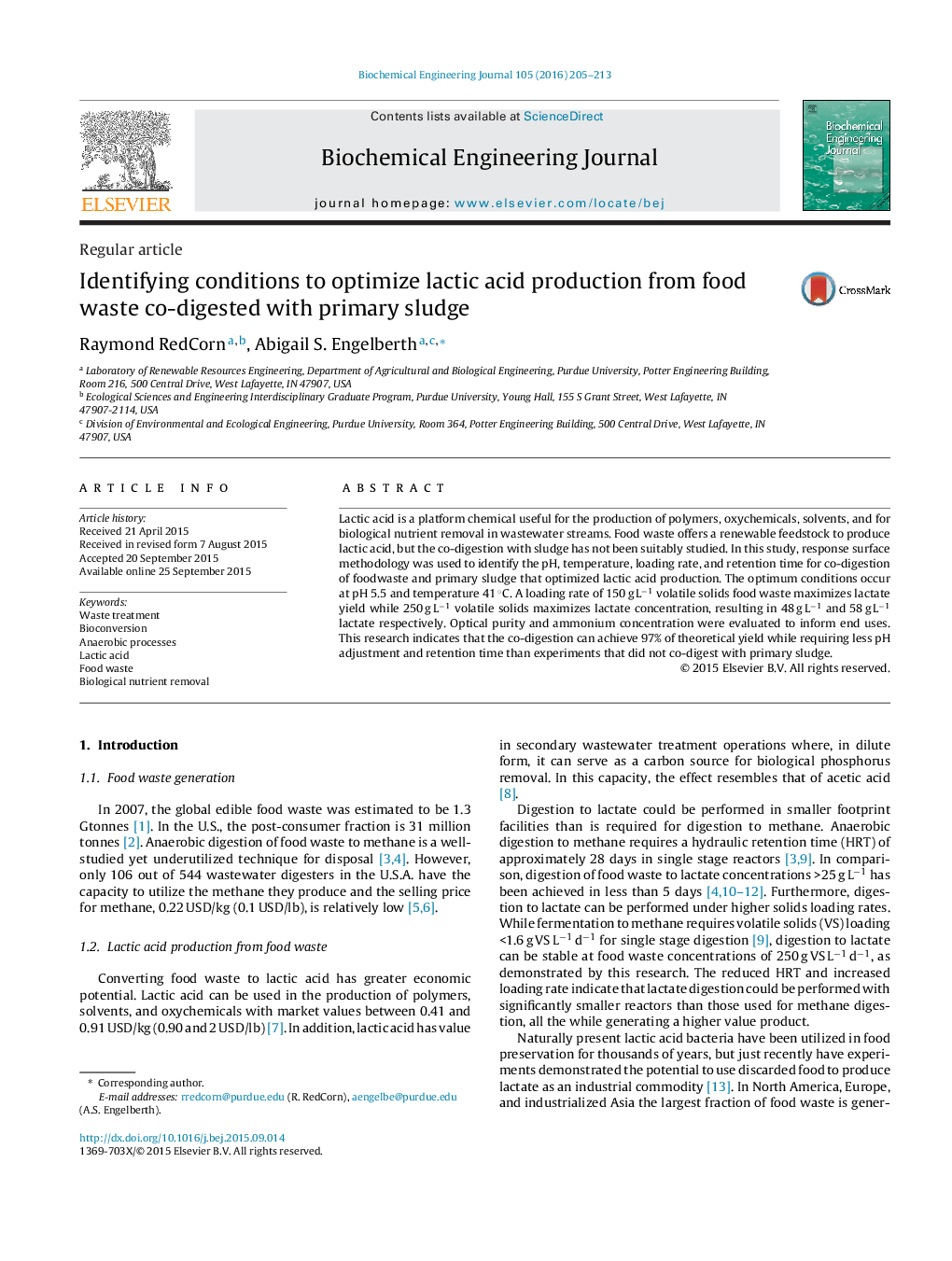| Article ID | Journal | Published Year | Pages | File Type |
|---|---|---|---|---|
| 2821 | Biochemical Engineering Journal | 2016 | 9 Pages |
•We optimized the co-digestion of foodwaste and primary sludge to lactic acid.•A lower optimum pH was identified at 5.5.•Max lactic acid concentration was achieved in 1/3 the time of previous experiments.•97% of the theoretical yield was achieved.•We provide the first empirical model of food waste fermentation to lactic acid.
Lactic acid is a platform chemical useful for the production of polymers, oxychemicals, solvents, and for biological nutrient removal in wastewater streams. Food waste offers a renewable feedstock to produce lactic acid, but the co-digestion with sludge has not been suitably studied. In this study, response surface methodology was used to identify the pH, temperature, loading rate, and retention time for co-digestion of foodwaste and primary sludge that optimized lactic acid production. The optimum conditions occur at pH 5.5 and temperature 41 °C. A loading rate of 150 g L−1 volatile solids food waste maximizes lactate yield while 250 g L−1 volatile solids maximizes lactate concentration, resulting in 48 g L−1 and 58 g L−1 lactate respectively. Optical purity and ammonium concentration were evaluated to inform end uses. This research indicates that the co-digestion can achieve 97% of theoretical yield while requiring less pH adjustment and retention time than experiments that did not co-digest with primary sludge.
